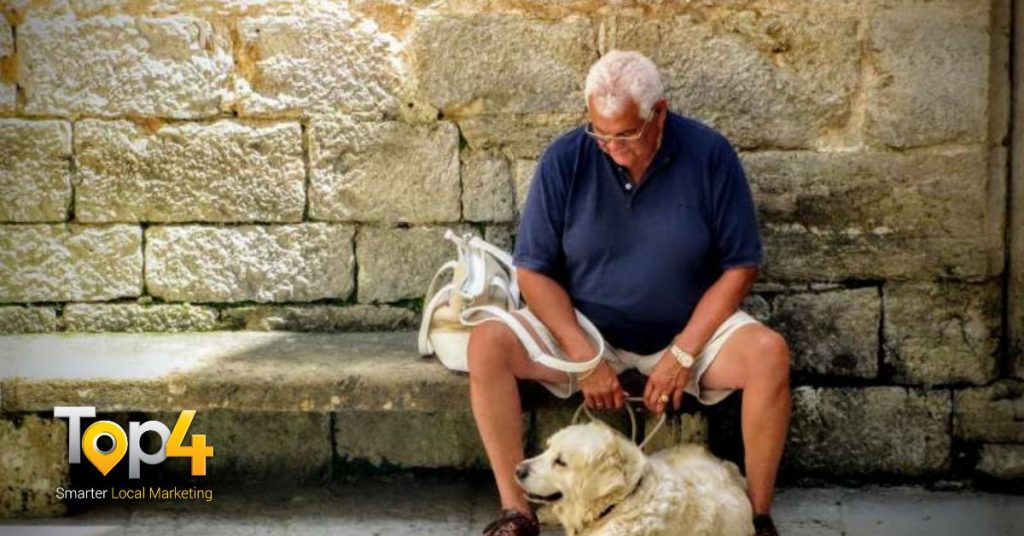If you are considering euthanasia of a healthy dog then do not forget that rehoming may be a better option. Ask your vet’s advice – many can help with solving behavioural problems, and they have information on rehoming.

Is my dog in pain or is it old age?
Always discuss this with your vet. Do not be afraid to visit the vet sooner rather than later. Many of the signs of old age, such as arthritis, can be relieved. Your dog’s problems may be treatable – and early treatment reduces suffering.
Dogs do not necessarily show pain by crying or howling. Assessment of long-term pain can be difficult even for vets, as animals (and people) tend to adapt their behaviour to cope. Sometimes the only way is to try using painkillers (only use those prescribed by a vet) to see if your dog brightens up.
Your dog could be in pain if there has been a change in behaviour, a loss of appetite or a reluctance to play or move around. It may also be a sign of pain if your dog is restless or cannot seem to get comfortable, or is sitting or lying in an abnormal position, or if your dog seems tense or withdrawn, or has lost enthusiasm for life. Always discuss your dog’s symptoms with your vet. All of these signs can be caused by problems other than pain.
Arriving at the decision to euthanase your dog
Talk it over with your veterinary surgeon and your family and friends. Questions to think about include:
– Can your dog still eat, drink, sleep and move around reasonably comfortably?
– Does he or she respond to your presence and greet you?
– Does feeding time attract interest?
Persistent and incurable inability to eat, vomiting, signs of pain, distress or discomfort, or difficulty in breathing are all indications that euthanasia should be considered. You and your family know your dog better than anyone else, so try to make a reasoned judgement on his or her quality of life. Your vet will help you with this and will often make a recommendation. If you are hoping for an improvement in your dog’s condition, setting a time limit may be a sensible option. Sadly, few dogs die peacefully in their sleep at home. Most reach a point when their quality of life is unsatisfactory, and a decision for euthanasia has to be made.
Living with a chronically ill dog can be emotionally (and financially) draining. Often there is a substantial time commitment involved in care. Not every owner is able to cope and, if there is no chance of recovery and you are unable to give your dog the degree of care needed for a comfortable life, it may be better to opt for euthanasia. With some invalid dogs, there is the possibility of sudden and unpredictable deterioration. If you are unable to make arrangements for your dog to receive emergency care (all vets in the UK have to make provision for this) euthanasia may be a better option.
What actually happens during euthanasia?
Consider taking some time off work to get over the event. Explain the situation to the receptionist when you make the appointment as you can often choose a quiet time for your visit to the surgery. It may be a good idea for a friend or family member to come with you for support. Some vets will agree to make house visits if you prefer this option. If your dog is already hospitalised, then you can ask to visit and say goodbye if you wish. However, if your pet is under an anaesthetic, it may be kinder to agree to euthanasia without waking him, and perhaps to see him afterwards.
The following is a detailed description of the process. Some of the events described may be distressing but remember that your dog rapidly loses consciousness and cannot feel pain from that point onwards.
You will normally need to sign a consent form.
Euthanasia is usually carried out by injecting an overdose of anaesthetic into the vein of the front leg, although the injection can be given to other areas of the body as well. The dog is held by a nurse, and a small patch of fur is shaved off. All your dog feels is a tiny prick of the needle – then the injection is painless.
Occasionally, a dog may give a small cry as the injection is given – as with all anaesthetics, there is a brief feeling of dizziness as the drug takes effect. Unconsciousness follows within seconds, often before the injection is finished. Death occurs within a couple of minutes when the heart stops beating. It may take a little longer if the animal is extremely ill or has poor circulation. Sometimes in this instance, it may prove difficult for the vet to find a vein.
If a dog is agitated or restless, then the vet may give a sedative first, but finding a vein can then be more difficult and the injection may work more slowly.
In the few minutes after death, you may see reflex muscle movement or involuntary gasps. These are not signs of life, in fact, they are reflexes denoting that death has occurred. The eyes usually stay open and the bladder sometimes empties.
The vast majority of euthanasias proceed smoothly and quickly with little distress to the animal. Even if there are difficulties, it is still a quick procedure that can save your dog many days or weeks of suffering and a painful end.
Should you stay with your dog during euthanasia?
This is entirely your choice. It may be a comfort to you to see that euthanasia is usually a quick and gentle process, but try not to feel guilty if you feel unable to watch – if you are very upset then this may upset your dog. Vets and nurses choose their profession because they want to help animals. You can rely on them to treat your dog sympathetically even in your absence. If you wish, ask to see your dog afterwards. At the end you will probably be offered the opportunity to be alone with your pet for a few minutes.
What happens after euthanasia?
Most people opt for cremation arranged by the vet. Usually, this is communal cremation with other dogs but you can arrange for individual ashes to be returned, although this may be expensive. There are pet cemeteries for which vets usually have details, or you can take the body home for burial. If you are undecided, then vets can usually store the body while you consider. Do not be embarrassed to ask if you wish to keep a lock of hair, or perform a ceremony such as saying a prayer – vets are quite used to such requests and will be sympathetic.
It is entirely natural to feel upset when your dog dies. After all, your dog is a beloved family member. Do not be embarrassed about showing your emotions – veterinary staff expect you to be upset. It takes time to get over the loss of a loved one and, although reactions differ, very often a mixture of feelings – sadness, loneliness and anger – can follow.
Try not to feel guilty or blame yourself – the decision for euthanasia is taken with your dog’s interests at heart to avoid suffering. Some people find themselves questioning whether they did the right thing. It is normal to feel some doubt, though this will ease in time.
Be prepared for the house to feel empty on your return. Try to treasure your memories and talk to family, and friends. If you have questions about your dog’s condition, then talk to your vet. Sometimes family, friends and work colleagues who themselves have not experienced a special relationship with an animal, may be unsympathetic or make unhelpful remarks. It can be helpful to talk to someone who understands your feelings, such as our Pet Bereavement Support Service.
For children, it can be especially upsetting, as it may be their first experience of death. Children need support even if they are not outwardly upset. Talk to them honestly about what is happening and, as far as possible, involve them in decision-making. Rituals such as funerals, making a memorial or assembling a scrapbook with memories of the dog may help.
Be prepared for questions about death and its finality. For adolescents the loss of a dog can be particularly difficult, as your dog may be the family member to whom they feel closest. For young people who have other difficulties in their lives, the loss of a pet can be devastating, and it may be sensible to seek professional advice.
Other dogs may notice the loss and respond to it. They may be unsettled and lose their appetite for one or two days. It may help if they see the body of the deceased dog. Giving them extra attention may provide some comfort.
Another dog?
Sooner or later you may start to think about getting another dog. No two dogs are the same and, although another may have characteristics in common with your previous dog, he or she will have a different personality. Your relationship will not be a ‘replacement’ but it can still be very rewarding.
Everyone is different, and when you feel that you want another dog, you will probably find that the new dog is a worthy successor. The knowledge you have gained from caring for your dog could be put to good use caring for one of the many dogs currently in shelters for want of an experienced owner.
source: bluecross.org.uk
Wood Vet Services is committed to providing a caring and compassionate pet euthanasia service from the comfort of your own home. We understand how difficult this time can be for your family and take every measure to ensure you and your pet are kept as comfortable and peaceful as possible.
To find out how we can help you with your Website + Marketing, using our unique location marketing platform called Top4, get in touch today at www.top4marketing.com

Looking to build customer loyalty through social media? Don’t forget to add your business to Top4.global
List your business, create your own digital store to sell goods and services, and share posts on social media. Promote your business on Google instantly! Should you need help with local digital marketing then view our new Google Marketing Platform and services Top4 Marketing
Get Found On Google Promote Your Website, Reach local customers today!
Our Digital Marketing Agency Services Across All Industries Include Search Engine Optimisation (SEO), Google Marketing, Website Design, Corporate Web Development, and local location-based marketing using our own Google Marketing Platform!
Engage A Social Media Agency For Only 1/3 The Cost Of Employing A Social Media Manager…LET’S TALK!




